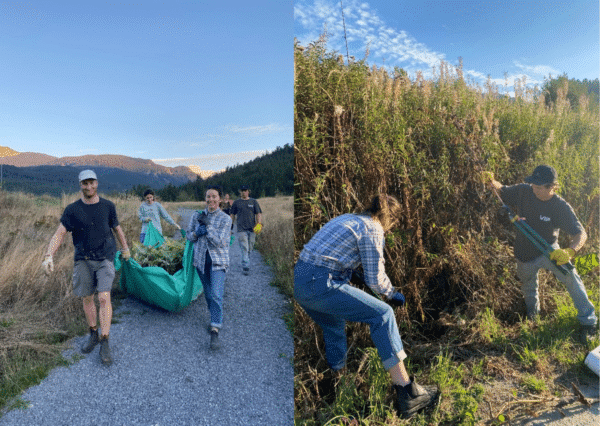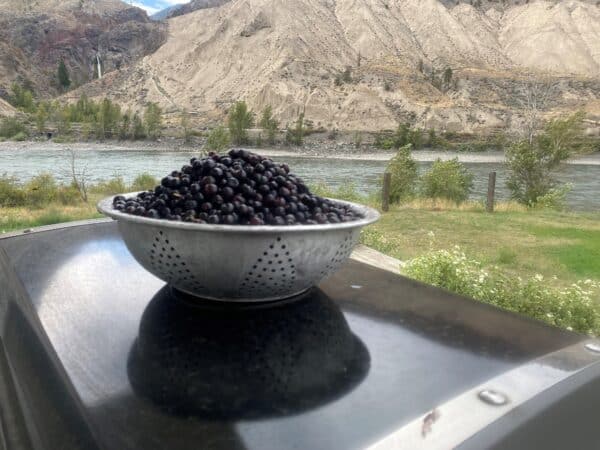By Lisa Houle | July 22nd, 2022
Ask any angler about a favourite fishing spot and, while you likely won’t get an answer on an exact location, you may get some useful information about the species of fish being caught. When anglers start to notice more invasive species in their favourite spots, it’s time to take action. And that’s exactly what’s happening in the Kootenay Region. Registration is now open for the inaugural Castlegar Invasive Fishing Derby using the MyCatch by Angler’s Atlas app. The derby runs July 22-31, 2022 and the target species are invasive Walleye (Sander vitreus) and Northern pike (Esox lucius) in the Columbia River. Anglers can register at any point during these dates.

Tournaments Director Jim Clarke from Angler’s Atlas – who runs competitive fishing derbies across Canada and the U.S. – is one of the organizers of this event. Angler’s Atlas has been collecting scientific data on size and location of fish species for the past 20 years. With a free membership and the app, anglers become community scientists, providing critical catch data. In turn they get access to information on water bodies, fish species and thousands of free maps. Angler’s Atlas then provides this catch data to researchers and biologists to further fisheries research, projects and conservation efforts. They have also hired 15 biology students across Canada focused on aquaculture and fisheries.
When data started to reveal there was an increasing encroachment of invasive Walleye and Northern pike, Clarke reached out to the community of Castlegar. Destination Castlegar partnered with Clarke to help amass a volunteer base and paid the fee to run the event.

Erin Bates, Executive Director of the Central Kootenay Invasive Species Society, calls it a great opportunity to educate the public on the spread of invasive species in the area. “CKISS was very excited to hear about the derby and we are hopeful that it will lead to increased public awareness of the threats that invasive fish pose to aquatic ecosystems in the Central Kootenays,” said Bates.
Local Castlegar businesses are also angling for a piece of the action. Hedin Nelson-Chorney with Tailout Brewing says they have created an Invasive Species Hazy IPA as part of their “conservation series” of beer, in collaboration with Destination Castlegar, Tara Smith Art and Chillbilly Sportfishing Charters. The beer cans feature watercolor paintings of both Northern pike and Walleye, created specifically for this event.

“These invasive species are self-propagating, and they are top-end predators competing with the endangered White sturgeon (Acipenser transmontanus) and eating the Trout and Kokanee populations in the Columbia River. We’re utilizing the anglers to remove these invasives,” said Clarke.
Field survey crews have been sent out in the past to electrofish in the Columbia River (a process that involves using a direct electric current to attract and temporarily stun targeted species for capture), and the B.C. government and Okanagan Nation Alliance did test netting to remove spring spawning pike.
“Anglers are essentially paying for the event through the purchase of their freshwater license and the entry fee, which is funding the prizes. We won’t know the population of fish in that area until we start seeing them roll in the same day. If we’re getting 80-plus per day, that’s a problem.”
Registrants send pictures of their catch through the My Catch app to the catch approvals team. The team verifies the species, zooms in on the tail to determine the size and the fish shows up on a live leaderboard. Research biologists who use the data from the app sign a non-disclosure agreement and the photos can’t be reverse engineered to show location. “The #1 rule to anglers is that their secret spot stays secret,” said Clarke.

What’s different about this tournament from typical catch-photo-release tournaments is that the invasive species are not returned to the water. “We hope people understand the intent of this event. This is a derby which is a catch and kill scenario. We’re helping the fishery go back to the way it was, a pristine fishery. Mankind was the one that screwed it up, let’s use mankind to right the situation,” said Clarke.
Dr. Nick Wong, Invasive Species Council of B.C.’s fish expert and Manager of Science and Research, appreciates when communities come together to take a stand against invasive species.
“B.C.’s aquatic species face many types of stressors, including competition with invasive species. Participating in events like fish out derbies are amazing opportunities to connect people and nature, have fun and make a difference by alleviating some of that invasive species stress.”
Lisa is a Communications and Outreach Coordinator at ISCBC. She values a diverse environment and connecting with others about environmental protection. In her spare time Lisa enjoys spending time at the ocean and beach combing for sea glass. You can reach Lisa at lhoule@bcinvasives.ca
Share





